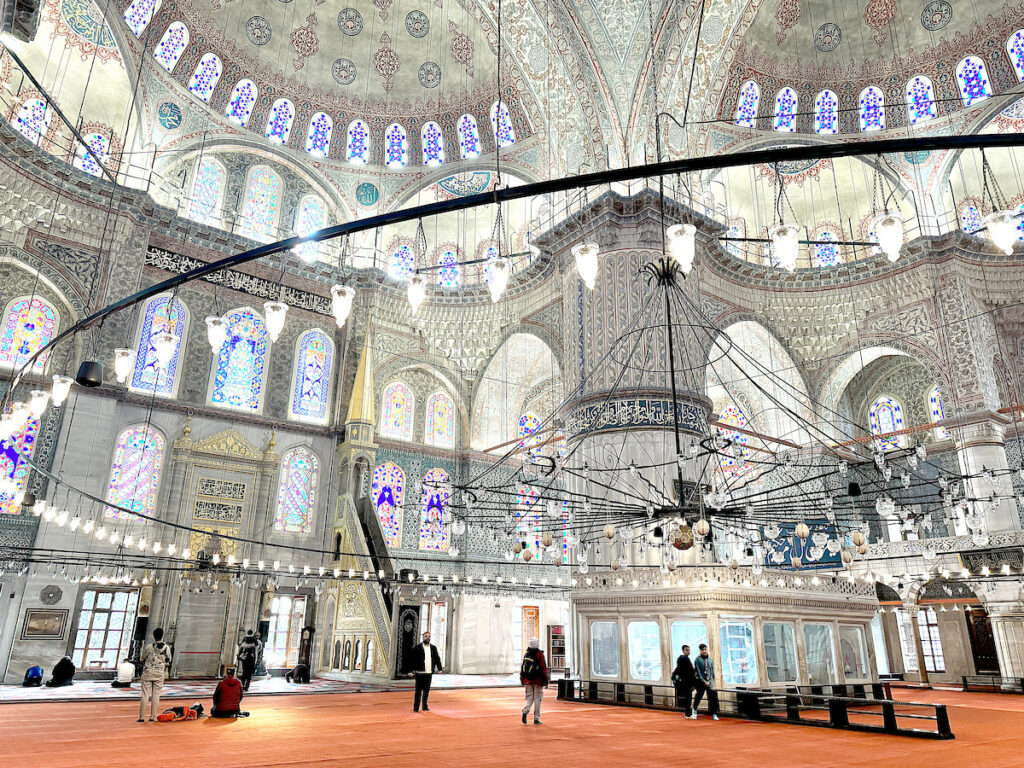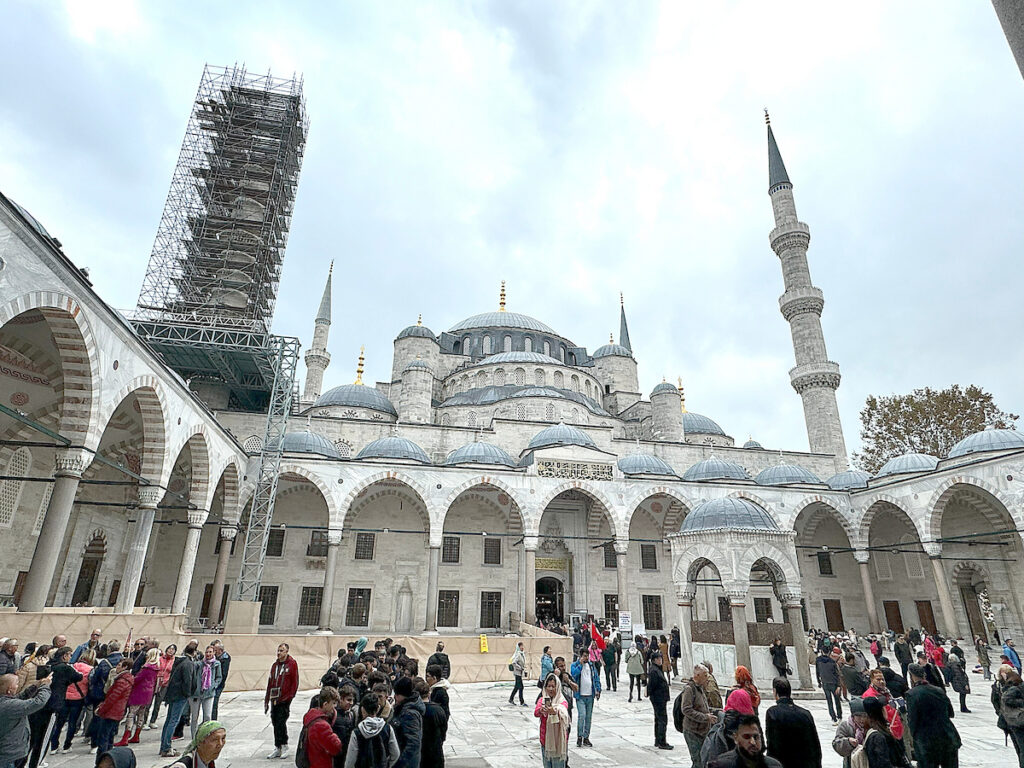Sitting within the largest city in Turkiye, Istanbul is home to one of the most beautiful Ottoman mosques in the country. Also known as the Sultan Ahmet Camii or Sultan Ahmed Mosque, the Blue Mosque was completed between 1609 and 1617 by architect Mahmet Ağa under the direction of Sultan Ahmed I. The mosque sits across Sultanahmet Square from the equally imposing Hagia Sophia Mosque.

The outside of the mosque has six minarets, or large slender towers that house a balcony where a muezzin calls Muslims to prayer multiple times a day. It is the only mosque in Istanbul with six minarets. Preceding the prayer hall is a large courtyard that is almost as large as the mosque itself. The structure is composed of a central dome measuring 23.5m in diameter and 43m high, held-up by four internal pillars. Around the central dome are four smaller semi-domes.

The “blue” in the mosques’ title comes from the 20,000+ blue-toned Isnik ceramic tiles that were handmade and situated onto the interior of the structure. The tiles feature many images of flowers, paisley patterns, feathers, and arabic scripture. Over the years, the mosque has endured usual wear-and-tear, a fire, and regular restorations leading to the replacement of many of the original tiles.

The mosque is naturally lit during the day by the more than 200 stained glass windows and chandeliers. The chandeliers contain ostrich eggs, used to repel spiders and prevent the formation of spider webs. The floors are covered with many intricately designed carpets that have been donated and are changed out regularly.

In the prayer hall, the mihrab, a section carved out in the wall that signifies the direction of Mecca, is the main focus. The mihrab is made of intricately carved marble and panels of inscription. The minbar, or the raised platform where the iman gives his sermons is also carved from marble and covered by a pointed gold cap.

Though the Blue Mosque garners significant tourist attention, it is still a functioning mosque and operates around worshiping hours. The mosque is usually open from 9 am to 6 pm but closed to visitors for 90 minutes during the six prayer times each day and closed till noon on Friday, a sacred day for Muslims:
Fajr (Dawn): Approximately 6:20 am
Sunrise: Approximately 6:37 am
Zuhr (Noon): Approximately 1:29 pm
Asr (Mid-afternoon): Approximately 4:15 pm
Maghrib (Sunset): Approximately 6:35 pm
Isha (Night): Approximately 8:06 pm
Guests are asked to dress modestly, with women covering their shoulders, knees, and heads. Outer garments are provided at the door if necessary. You must also remove your shoes before entering the prayer hall as a sign of respect. Remember, this is a place of worship, so act respectfully, politely, and quietly as you admire the Ottoman architecture and Islamic traditions. Admission is completely free, but you can purchase a guided tour for about $15.00 and up.

